Viewing search results for "University of North Carolina at Greensboro"
View All Posts

This week we have another 34 titles up on DigitalNC! While this batch focuses heavily on newspapers from Hendersonville, Goldsboro, and Greensboro, it also includes Fayetteville, Henderson, Albemarle, Clinton, Burlington, and our first addition from Bush Hill. Bush Hill (renamed Archdale in 1886) was home to the Annie Florence Petty, who was the first professionally educated and trained librarian in the state of North Carolina. Petty (born 1871) was a founding member of the North Carolina Library Association and, in keeping with her Quaker upbringing, she was also the first secretary of the North Carolina Friends Historical Society. After her prosperous, four-decade long career building the library at the North Carolina State Normal and Industrial School (now the University of North Carolina at Greensboro) and other libraries across the state, she retired in 1933 and moved into the family home she shared with her equally successful, chemist sister, Mary Petty.
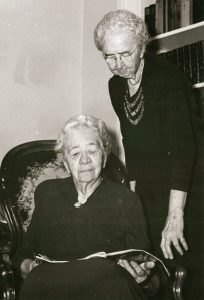
Mary (left) and Annie Petty in 1952. Image via uncghistory.blogspot.com
Over the next year, we’ll be adding millions of newspaper images to DigitalNC. These images were originally digitized a number of years ago in a partnership with Newspapers.com. That project focused on scanning microfilmed papers published before 1923 held by the North Carolina Collection in Wilson Special Collections Library. While you can currently search all of those pre-1923 issues on Newspapers.com, over the next year we will also make them available in our newspaper database as well. This will allow you to search that content alongside the 2 million pages already on our site – all completely open access and free to use.
This week’s additions include:
- The News Dispatch (Clinton, N.C.) – 1909-1917
- The North Carolina Prohibitionist (Bush Hill, N.C.) – 1886-1888
- The Observer and Gazette (Fayetteville, N.C.) – 1885-1887
- The Stanly Enterprise (Albemarle, N.C.) – 1898-1902
- The Twice-A-Week Dispatch (Burlington, N.C.) – 1913
- Border Review (Henderson, N.C.) – 1879-1880
- The Tobacconist and Review (Henderson, N.C.) – 1881
- The Henderson County Advertiser (Hendersonville, N.C.) – 1874
- The Henderson Times (Hendersonville, N.C.) – 1864
- The Western Courier (Hendersonville, N.C.) – 1878
- Independent Herald (Hendersonville, N.C.) – 1881-1882
- The Hendersonville News (Hendersonville, N.C.) – 1921-1922
- The Daily Rough Notes (Goldsboro, N.C.) – 1861
- Goldsboro’ Daily Rough Notes (Goldsboro, N.C.) – 1868
- Goldsboro’ Telegraph (Goldsboro, N.C.) – 1850
- North Carolina Telegraph (Goldsboro, N.C.) – 1850-1855
- Goldsboro’ Tribune (Goldsboro, N.C.) – 1862
- Goldsboro’ Patriot (Goldsboro, N.C.) – 1849
- The New Era (Goldsboro, N.C.) – 1853-1855
- The Goldsboro Bulletin (Goldsboro, N.C.) – 1883-1884
- The Daily News (Goldsboro, N.C.) – 1865
- Goldsboro’ Daily News (Goldsboro, N.C.) – 1866
- Goldsboro Mail (Goldsboro N.C.) – 1879
- Daily Morning Star (Goldsboro, N.C.) – 1867
- The Republican (Greensboro, N.C.) – 1870
- Daily Southern Citizen (Greensboro, N.C.) -1864
- The Topic (Greensboro, N.C.) – 1869
- Greensboro Union Register (Greensboro, N.C.) – 1869
- The Daily Battle-Ground (Greensboro, N.C.) – 1881
- The Daily Bugle (Greensboro, N.C.) – 1882-1884
- The True American (Greensboro, N.C.) – 1855
- The Southern Democrat (Greensboro, N.C.) – 1890
- Republican Gazette (Greensboro, N.C.) – 1869
- The Labor News (Greensboro, N.C.) – 1908-1909
If you want to see all of the newspapers we have available on DigitalNC, you can find them here. Thanks to UNC-Chapel Hill Libraries for permission to and support for adding all of this content as well as the content to come. We also thank the North Caroliniana Society for providing funding to support staff working on this project.
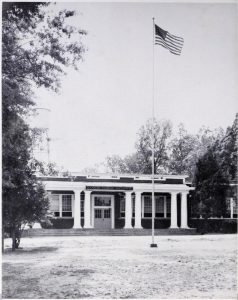
An exterior photo of Rankin High School, circa 1957
A new batch of yearbooks from Greensboro are now available on DigitalNC, courtesy of our partner, the University of North Carolina at Greensboro. Included in this collection are nearly 30 yearbooks from schools across Greensboro during the first half of the 20th century. While some yearbooks are more sporadic than others, this batch does include the 1907 Annual from Greensboro High School, making it one of the oldest high school yearbooks on our entire website!
These yearbooks include individual portraits, class portraits, as well as photographs of activities, clubs, and sports. Some of the yearbooks also include notable events throughout the school year, poems dedicated to the classes, histories of the classes, and “class prophecies”, where the students imagined where they would be in the future.
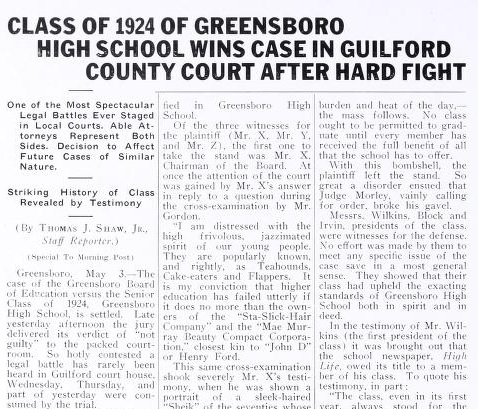
A news clipping about the 1924 court case of the Greensboro Board of Education v. the Greensboro High School Senior Class of 1924
One of the most notable events found in these yearbooks is in the 1924 Reflector from Greensboro High School. In May of 1924, the senior class was actually sued by the Greensboro Board of Education, alleging that the class members had forfeited their right to graduate by reason that they had failed to maintain the high standards associated with the school. When one plaintiff was called to the stand, he said that he was “distressed with the high frivolous, jazzimated spirit of our young people. They are popularly known…as Teahounds, Cake-Eaters, and Flappers.” The jury delivered a verdict of “not guilty” to cheering and applause in the courtroom.
Follow the links below to browse the yearbooks from the schools included in this batch:
- Annual, 1909, Greensboro High School
- The Reflector, 1911-1930, Greensboro High School
- Garnet and Gold, 1941-1959, Rankin High School
- Sumner Echoes, 1947-1953, Sumner High School
- The Pilgrim, 1926, Greensboro Bible and Literacy School
- The Spotlight, 1948-1963, Bessemer High School
To see more from our partner who provided these yearbooks, visit UNCG’s partner page, or take a look at their website.
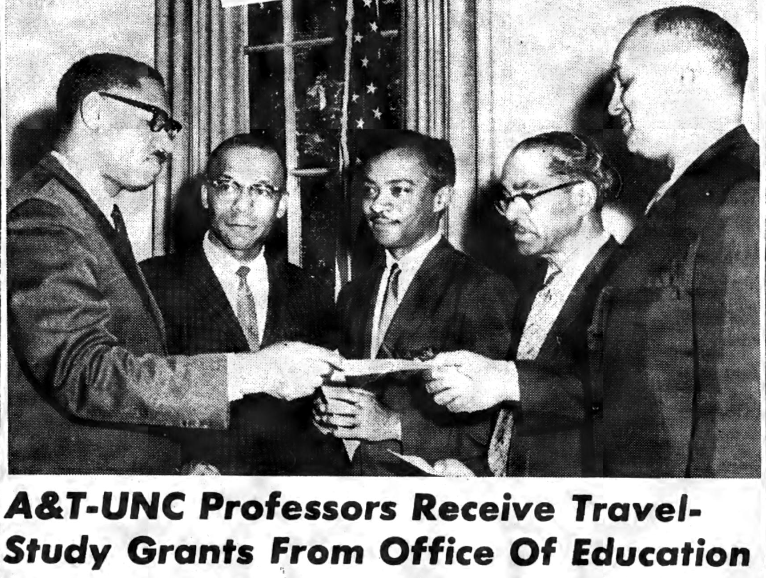
The Future Outlook, July 14, 1967, page 1
The Future Outlook, a community newspaper from Greensboro, NC, is now available on DigitalNC. Thanks to our partner, the University of North Carolina at Greensboro, nearly 25 years of the paper are now online and full-text searchable. The nearly 450 editions range from 1941-1947, 1949, 1952, and 1958-1972.
The Future Outlook served an African American community in Greensboro and documents major events from their perspective. Like community newspapers throughout North Carolina, the paper documented births, deaths, and events of its readership. Economic and business activities received a lot ink over the years, highlighting prominent Black leaders in Guilford County, as well as, members of clubs and professional organizations. Elections and voting related activities are also well documented. Before each election, including smaller city and county elections, the paper published extensive district maps and voting information.
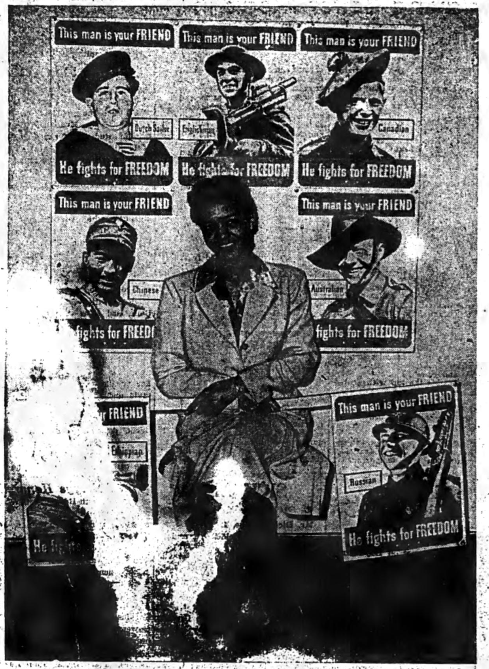
The Future Outlook, June 13, 1942, page 6
Another area that might be of interest for researchers is the paper’s coverage of local educational institutions. Greensboro is home to several historically Black colleges and universities, including North Carolina A&T and Bennett College. Scholars and students at these universities are heavily covered, especially in during the 1960’s. Students on the Dean’s List, scholars who received grants (like the image above), fraternities and sororities, and university conferences cover many front pages and serve as a record of university activities.
Also included in this batch are issues dating from 1941-1947, documenting the entirety of World War II and community reactions to it. Stories, advertisements, and political messages cover the pages during this period. The paper featured stories about locals who were working for the war effort, like Margaret Lanier. Lanier was a secretary in the Press Division of the Office of Facts and Figures. The Future Outlook published the photo on the left of her posing with seven new poster designs to be distributed for Flag Day in June 1942. In addition, there are many of the iconic war advertisements, posters and cartoons, featuring African American men and women.
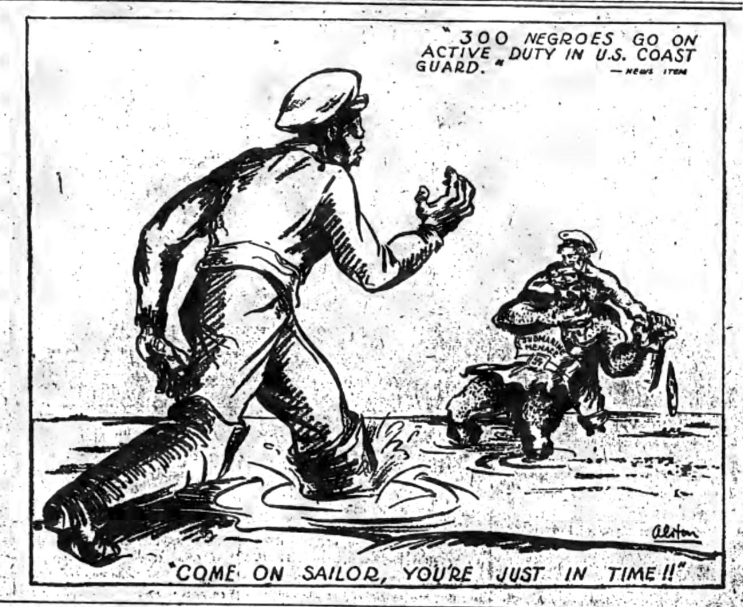
The Future Outlook, September 12, 1942, page 4
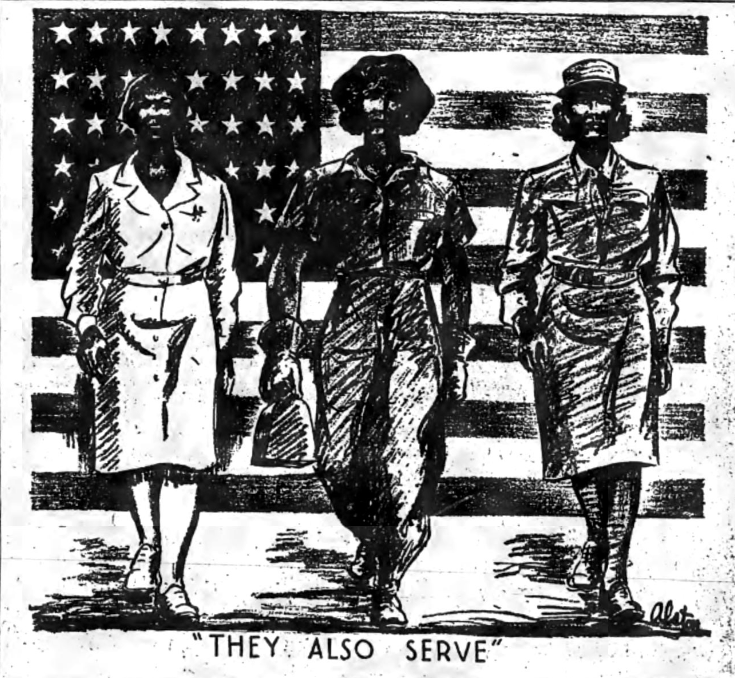
The Future Outlook, September 26, 1942, page 4
To view all of the issues of the Future Outlook, please visit the following link. To view more community newspapers like this one, please visit the North Carolina Newspapers Collection and limit by “Community Papers.” You can also learn more about this partner, the University of North Carolina at Greensboro, by visiting the contributor page or visiting the website.
Mascots are a complicated phenomenon. They inspire a spectrum of reactions: ridicule, ambivalence, or fierce loyalty. With thousands of yearbooks online, all of us here at the Digital Heritage Center have probably spent more time looking at yearbooks than anyone else you’re likely to meet. Mascots are a common theme.
I’ve been working on today’s post for quite some time; unable to find a history or comprehensive list of mascots in North Carolina I decided to compile one myself. So here’s a stab at a college mascot overview, drawn from yearbooks and other campus publications. Let me know what I’ve missed or gotten wrong!
Children
In the early 20th century, schools frequently chose children as mascots or sponsors, whether for a sports team or for a particular class. The earliest example we’ve found on DigitalNC is from a 1910 publication by Atlantic Christian College (now Barton College) in Wilson, which shows Elizabeth Settle Caldwell as the Senior Class sponsor.
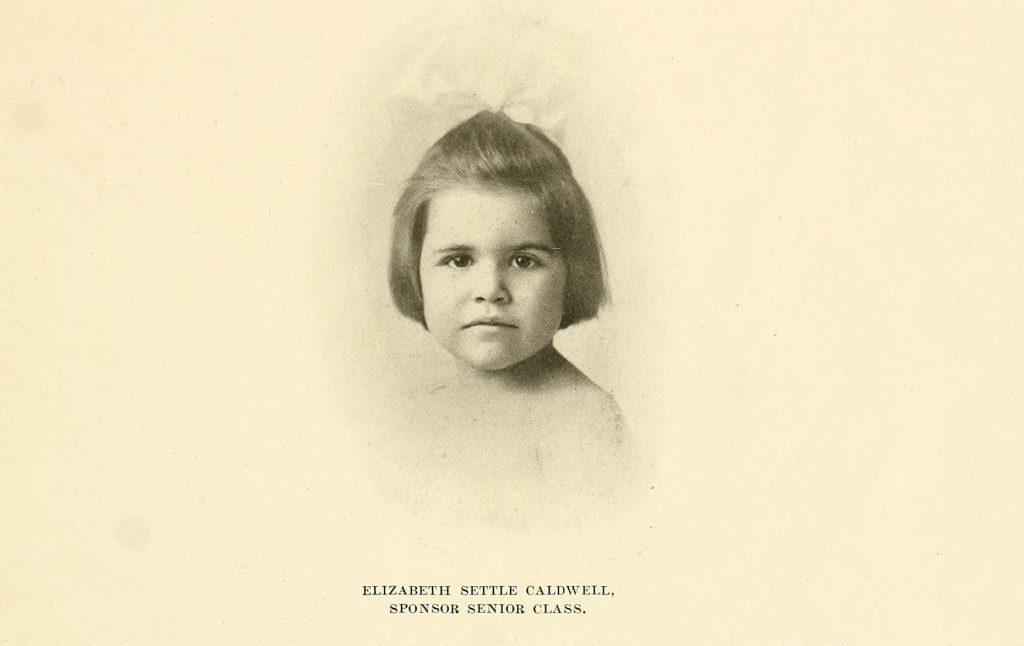
Elizabeth Settle Caldwell, First North Carolina Mascot? From the 1910 Pine Knot yearbook, Atlantic Christian College.
Ms. Caldwell was the daughter of Jesse Cobb Caldwell, the college president. From what we’ve been able to tell, children mascots were frequently younger siblings of students, teachers, or others associated with the school. Students mention that Ms. Caldwell brought “solace to many a lonely, homesick heart” and this may be why children were chosen – to foster a feeling of family and comfort among students. We’ve seen several references to mascots being elected or being chosen through competition, although what this might be we haven’t been able to discover. The trend of choosing children as mascots seems to continue through the 1960s. The latest one we found is Dawn, the Senior Class mascot at Peace College (now William Peace University) in 1966.
Animals
Animal mascots span schools across the state, whether it’s Rameses at UNC-Chapel Hill or WCU’s Catamount. The bulldog and different types of cats win out as most frequently adopted. Pictures of live animal mascots start to appear in yearbooks in the early 1900s, and continue today although much less frequently. For a variety of reasons, including concerns expressed by animal rights activists, schools have shifted away from actual animals to students dressing up like animals, as you’ll see later on in this post.
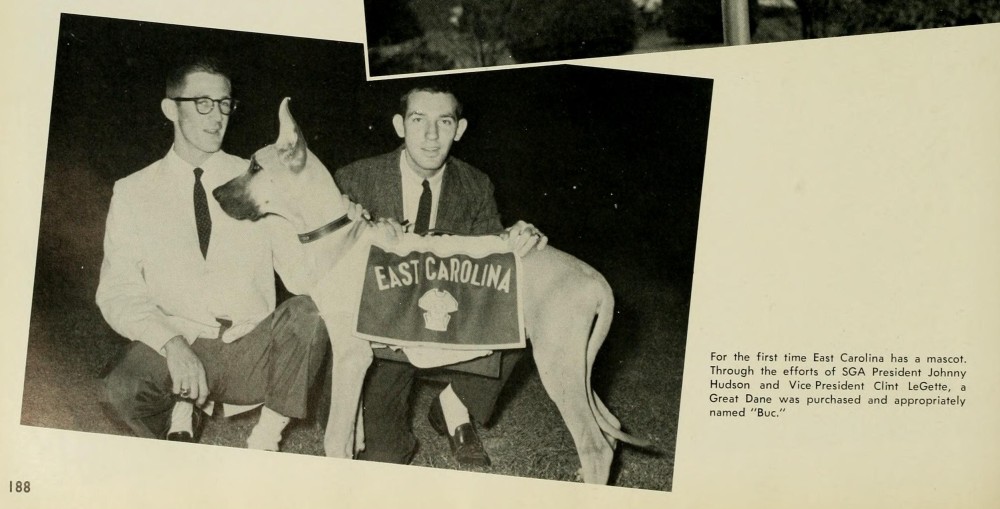
“Buc” is described here as East Carolina University’s first mascot. From the 1959 Buccaneer yearbook.
Characters
While about half of the four-year college mascots in North Carolina are animals, most of the others are characters that are historic, mythical, or extraordinary in nature. From what I’ve seen in NC yearbooks, humans dressing up as the school mascot really got traction in the 1960s. Initially, these costumes weren’t the fuzzy creations we think of today, but rather less complicated ensembles where the mascot’s identity (his or her face and body) was often apparent. Yosef the Mountaineer, beloved icon of Appalachian State University, was created sometime around 1942 and looked like this in the 1960s:
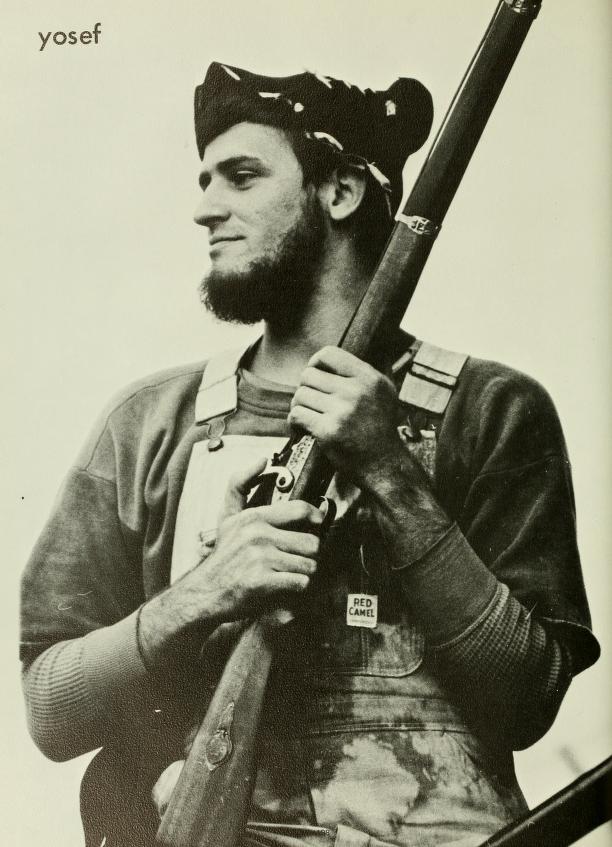
Yosef the Mountaineer, aka James Randle Tedder (we think). From the 1969 Rhododendron yearbook, Appalachian State University.
One of my favorites has to be this picture of Duke Blue Devil, from 1950:
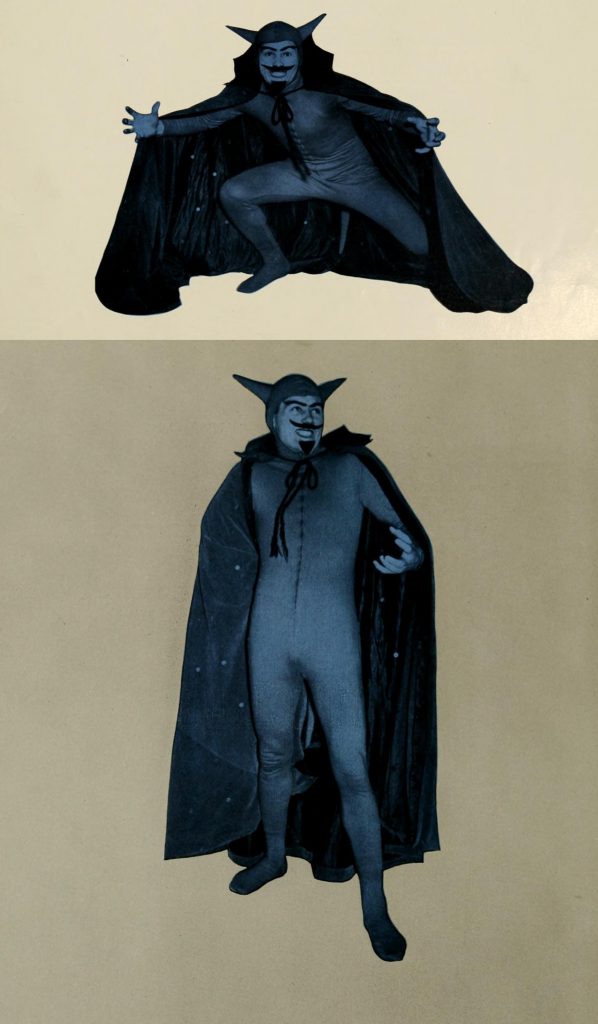
The Blue Devil. From the 1950 Chanticleer yearbook, Duke University.
Perhaps it was too hard to maintain a degree of consistency as students graduated over the years, and mascot anonymity seemed like a better idea. Whatever the reason, you start to see fuzzy, oversized costumes with gigantic headpieces in the late 1970s.
The Big Costumes
Whether animal or character, plush mascots that include a single piece body suit with a large plastic or cloth-covered head is something most Americans can identify with, thanks to professional sports. Colleges in North Carolina really embraced these costumes through the 1980s. Here’s what the UNC-Wilmington Seahawk looked like in 1987:

The Seahawk. From the 1987 Fledgling yearbook, UNC-Wilmington.
Some schools have developed multiple mascots dedicated to different audiences. It seems like the difficulty with these types of costumes is how to pull off a fierce facial expression that doesn’t come off as goofy or too scary for children. I think this picture from Davidson College sums it all up:
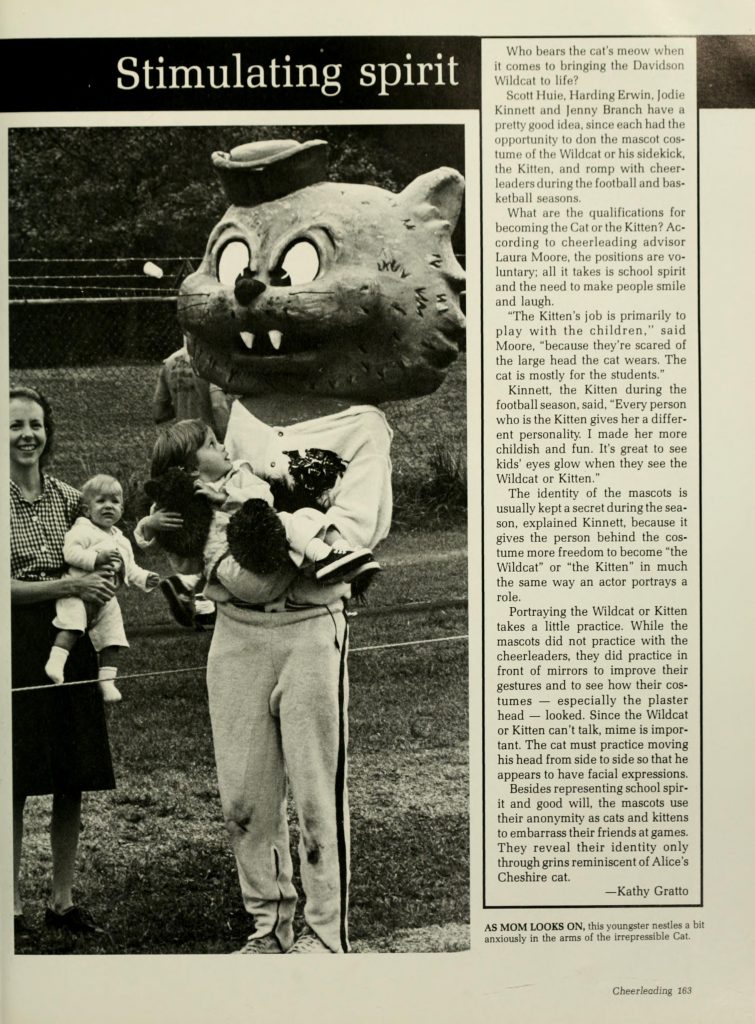
The Davidson Wildcat and … friends. From the 1983 Quips and Cranks yearbook.
I will also take this opportunity to mention a mascot that routinely makes the “wait … what?” list – the Campbell University Fighting Camels:
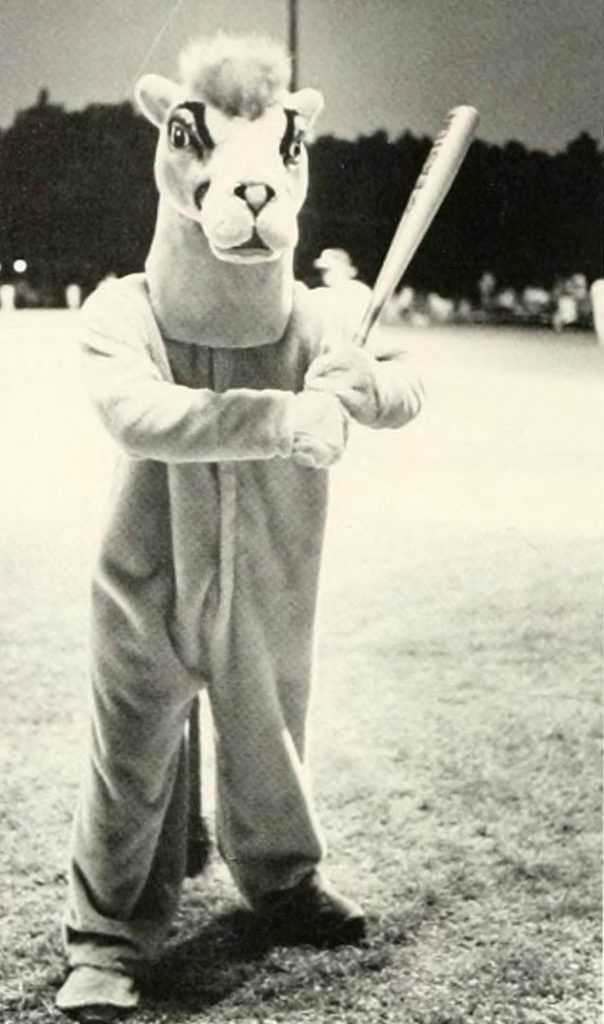
The Campbell Camel. From the 1983 Pine Burr yearbook.
Even the humans and human-like creatures are clothed in oversized costumes these days. Wake Forest University’s Deacon is a dapper chap:
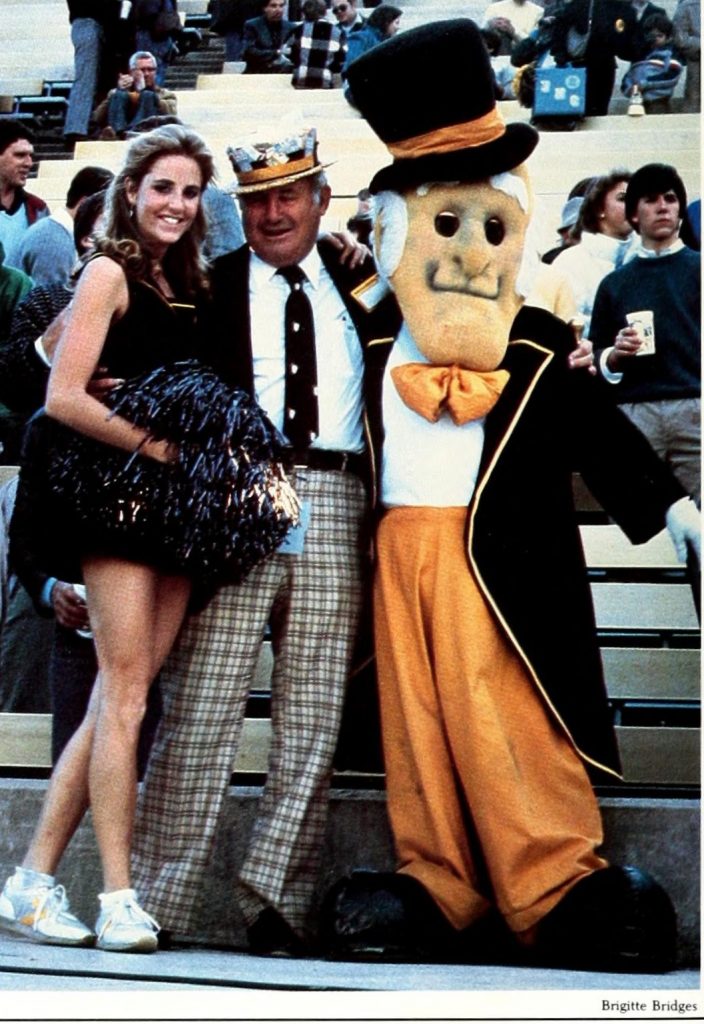
Wake Forest’s Deacon poses with fans. From the 1985 Howler yearbook.
In addition to the Demon Deacons and the Blue Devils, North Carolina boasts a number of other spiritual mascots: North Carolina Wesleyan’s Battling Bishops, Belmont Abbey’s Crusaders, and Guilford College’s Quakers. Meredith College’s teams are known as the Avenging Angels (formerly just the Angels). While Elon University’s mascot is now the Phoenix, before 2000 they were the Fighting Christians:
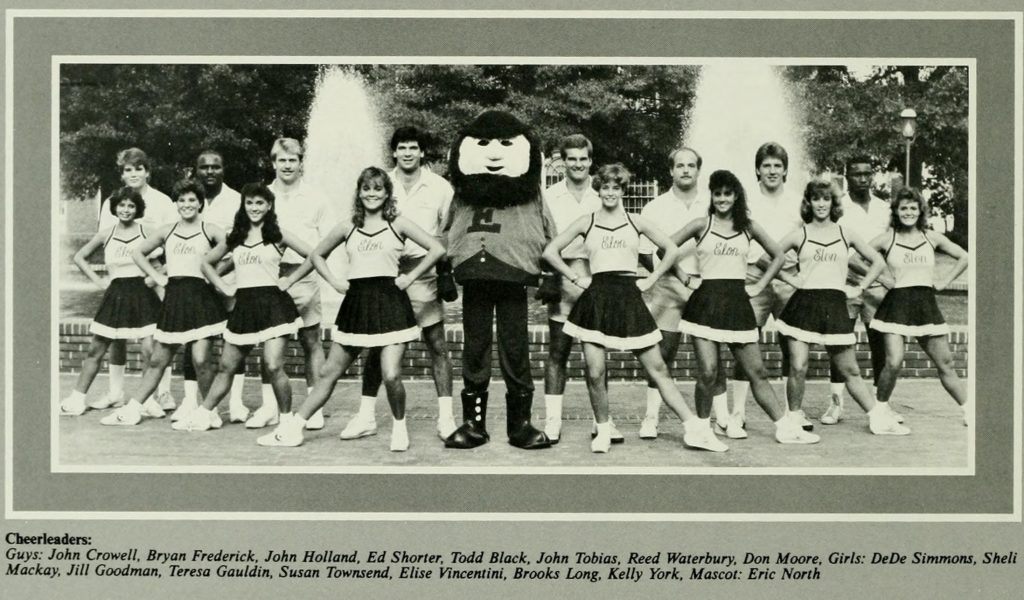
The Elon Fighting Christian mascot with cheerleaders. From the 1986 Phi Psi Cli yearbook.
Two schools break with the animal/human tradition in North Carolina. The Brevard College Tornadoes and the Louisburg College Hurricanes. Weather phenomena mascots are always difficult to pull off. I couldn’t find one for Brevard, but Louisburg, which currently has a bird mascot, had “Louie” up until 2006:
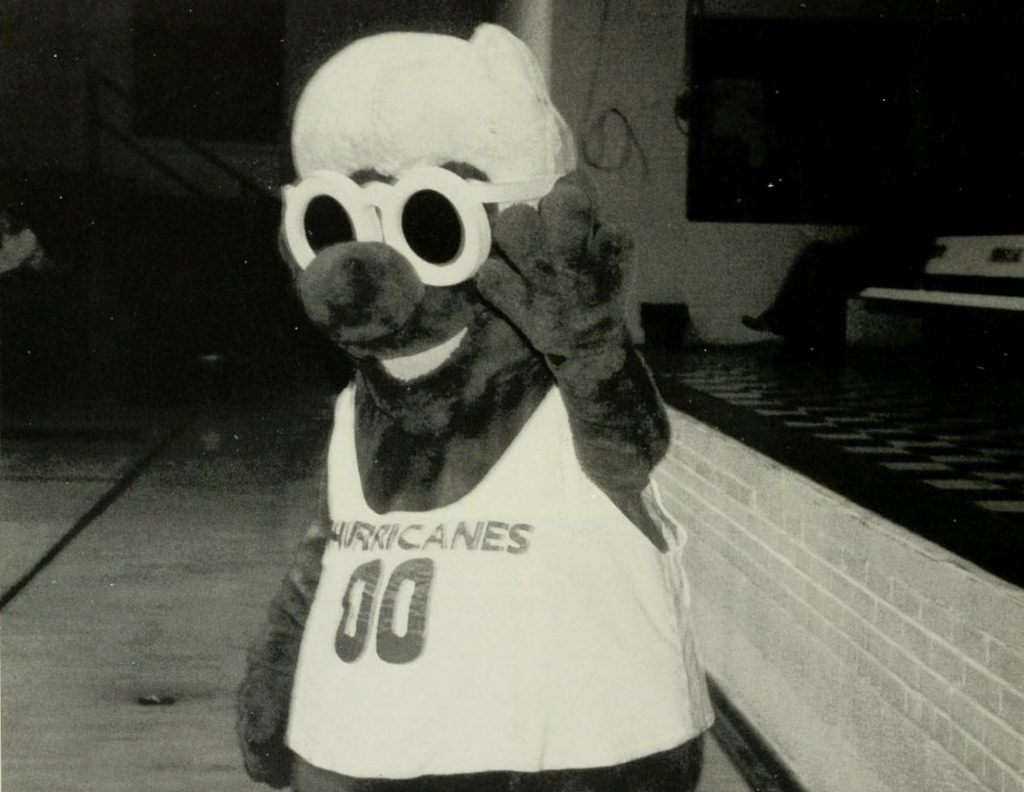
Louie, the former Louisburg College Hurricanes mascot. From the 1996 The Oak yearbook.
Who knows when the next mascot sea change will happen. Below is a list of mascots in North Carolina; let us know if we got anything wrong. Which one is your favorite?
| School |
Mascot |
Notes |
| Appalachian State University |
Yosef the Mountaineer |
First appeared in the yearbook in 1942 |
| Barton College |
Bulldog |
|
| Belmont Abbey College |
Crusader |
|
| Bennett College |
|
Known as the Bennett Belles |
| Brevard College |
Tornado |
|
| Campbell University |
Fighting Camels |
The Hornets in the 1920s-1930s |
| Catawba College |
Catawba Indian |
|
| Chowan University |
Hawks |
The Braves until 2006 |
| Davidson College |
Wildcats |
Also a bulldog (1929) and a bobcat (1939) |
| Duke University |
Blue Devil |
|
| East Carolina University |
Pirates |
Formerly Pee Dee the Pirate |
| Elizabeth City State University |
Vikings |
|
| Elon University |
Phoenix |
The Fightin’ Christians until 2000 |
| Fayetteville State University |
Broncos |
|
| Gardner-Webb University |
Runnin’ Bulldogs |
|
| Greensboro College |
The Pride |
Formerly the Hornets |
| Guilford College |
Quakers |
|
| High Point University |
Panthers |
|
| Johnson C. Smith University |
Golden Bulls |
|
| Lees-McRae College |
Wily the Bobcat |
|
| Lenoir-Rhyne University |
Joe and Josie Bear |
|
| Louisburg College |
Hurricanes |
|
| Mars Hill College |
Mountain Lion |
|
| Meredith College |
Avenging Angels |
Formerly the Angels |
| Methodist University |
Eagles |
|
| Montreat College |
Cavaliers |
|
| Mount Olive College |
Trojans |
|
| North Carolina A&T |
Aggie Dog (Bulldog) |
|
| North Carolina Central University |
Eagles |
|
| North Carolina State University |
Wolfpack |
|
| North Carolina Wesleyan College |
Battling Bishops |
Formerly the Circuit Riders |
| Peace College |
Pacer |
|
| Pfeiffer University |
Falcons |
|
| Queens University of Charlotte |
Rex the Royal |
|
| Saint Augustine’s University |
Mighty Falcons |
|
| Salem College |
Spirits |
|
| Shaw University |
Bears |
|
| St. Andrews University |
Knights |
|
| UNC Asheville |
Bulldog |
|
| UNC Chapel Hill |
Rameses the Ram |
Also known as the Tar Heels |
| UNC Charlotte |
Norm the Niner |
|
| UNC Greensboro |
Spartans |
|
| UNC Pembroke |
Braves |
|
| UNC Wilmington |
Seahawk |
|
| UNC School of the Arts |
Fighting Pickle |
|
| UNC School of Science and Math |
Unicorn |
|
| Wake Forest University |
Demon Deacons |
|
| Warren Wilson College |
Owls |
|
| Western Carolina University |
Catamount |
“Paws” |
| Wingate University |
Bulldog |
|
| Winston-Salem State University |
Ram |
|
The quote in this post’s title comes from a student who participated in a 1989 protest at UNC-Chapel Hill, pictured below.
One of the most historic student protests in the United States happened on this day in 1960 right here in North Carolina. NC A&T students protested segregation by sitting down at a segregated Woolworth’s lunch counter in Greensboro. The first images in this post were taken at that event and come from the 1960 Ayantee yearbook. Other images come from schools in all parts of the state, and date from 1960 through 2012.
North Carolina college students have passionately protested a variety of issues and events over the years. Looking back through yearbooks and student newspapers, you’ll find editorials with strong opinions and photographs of students standing up and speaking out in this most public of ways. Today we’re sharing the tradition of protest by students over the years, as reported in their own media.
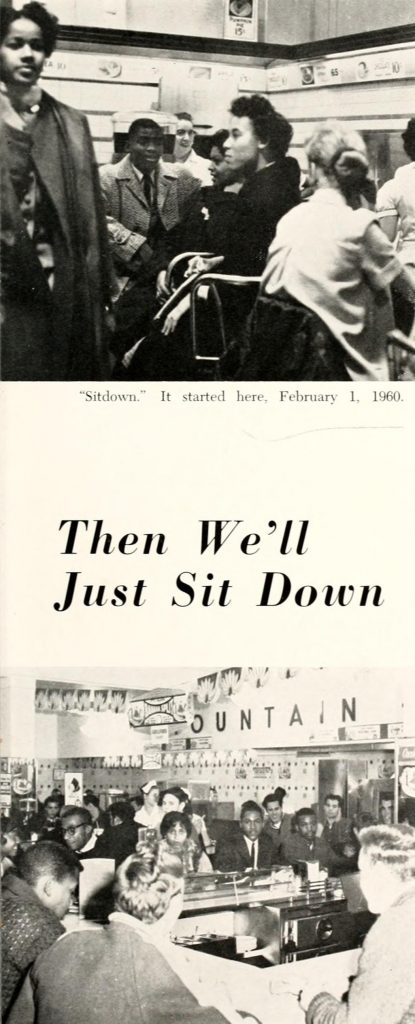
North Carolina Agricultural and Technical College, 1960, Segregation (Woolworth’s Lunch Counter, Greensboro)
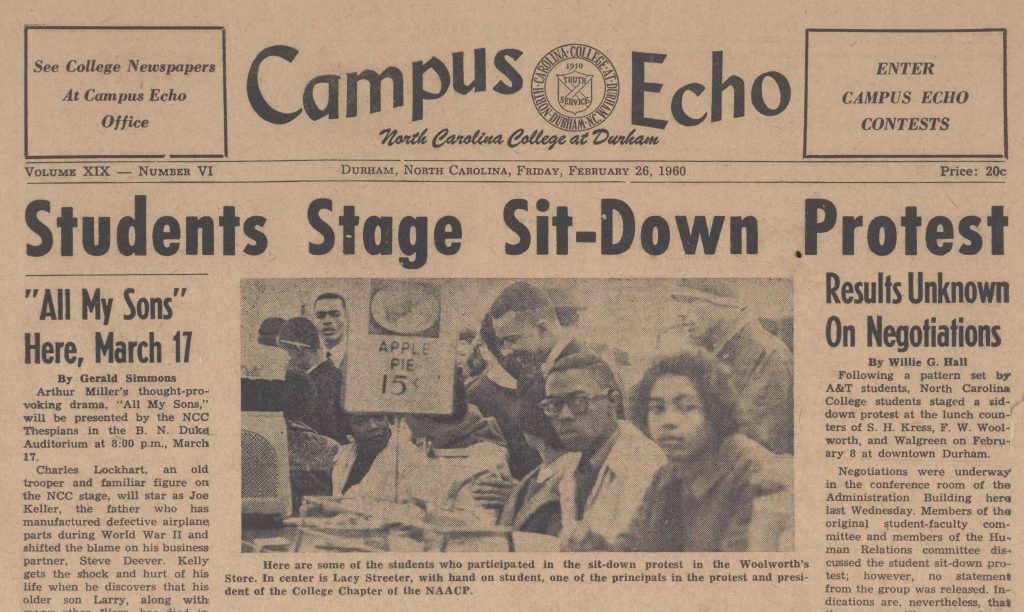
North Carolina Central University, 1960, Segregation (Woolworth’s Lunch Counter, Durham)
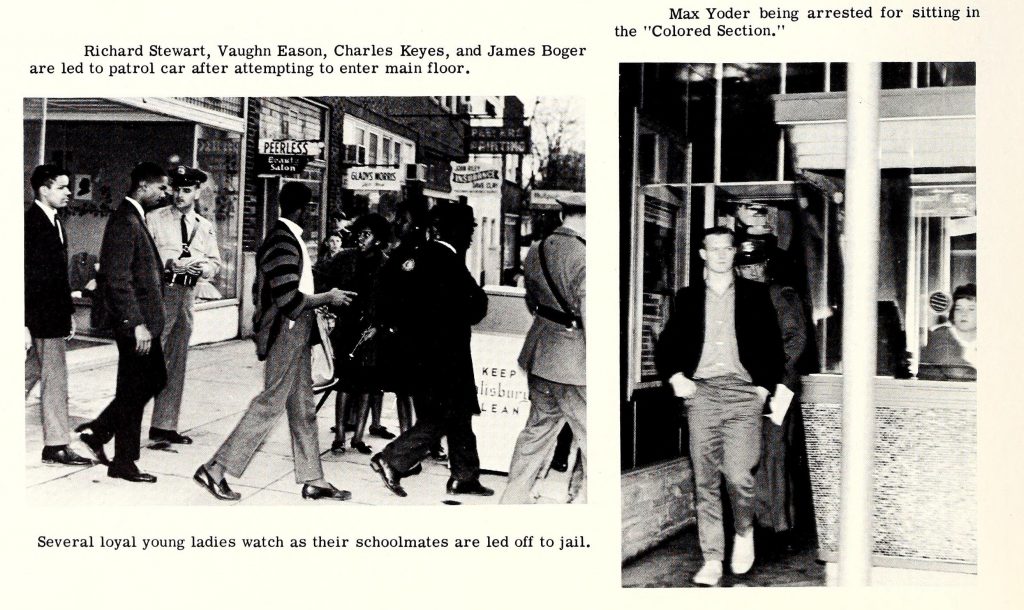
Livingstone College, 1961-1962, Segregation (Capitol Theater, Salisbury)
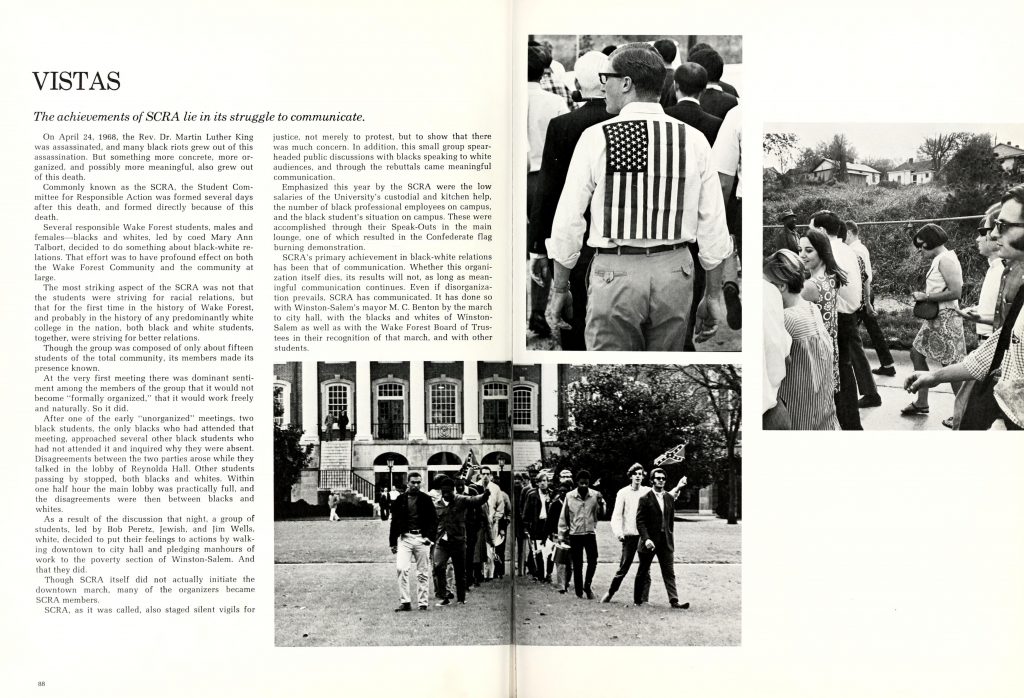
Wake Forest University, 1969, Assassination of Dr. Martin Luther King, Jr.
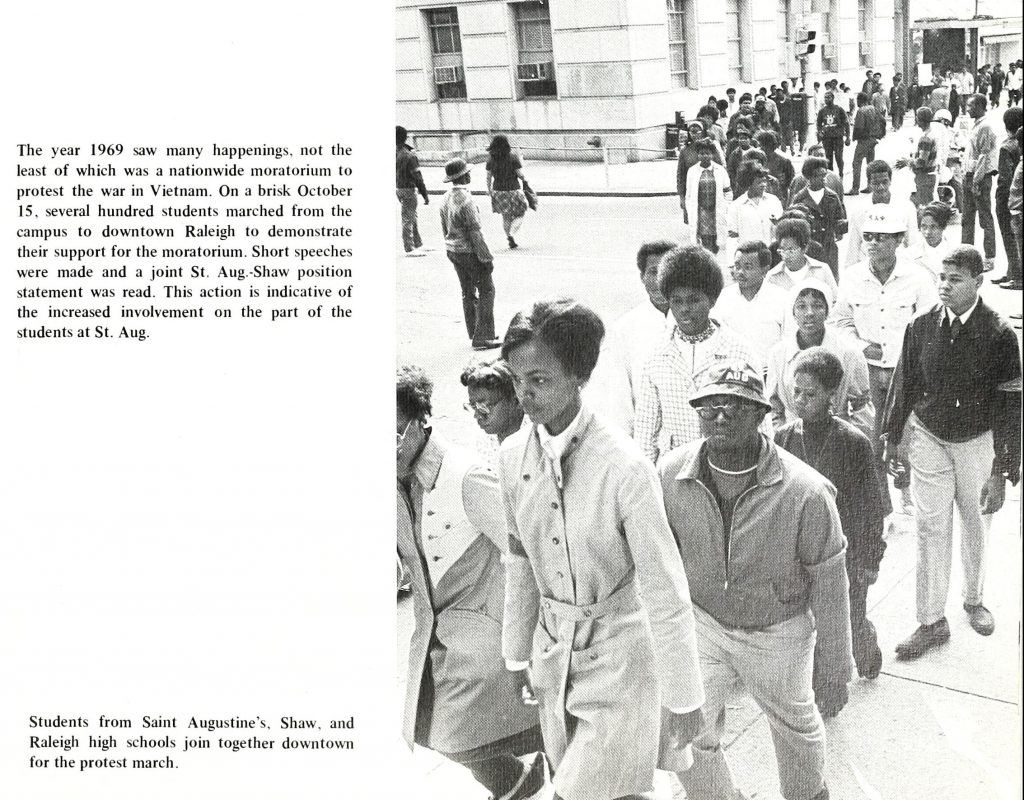
Saint Augustine’s, 1970, Vietnam War
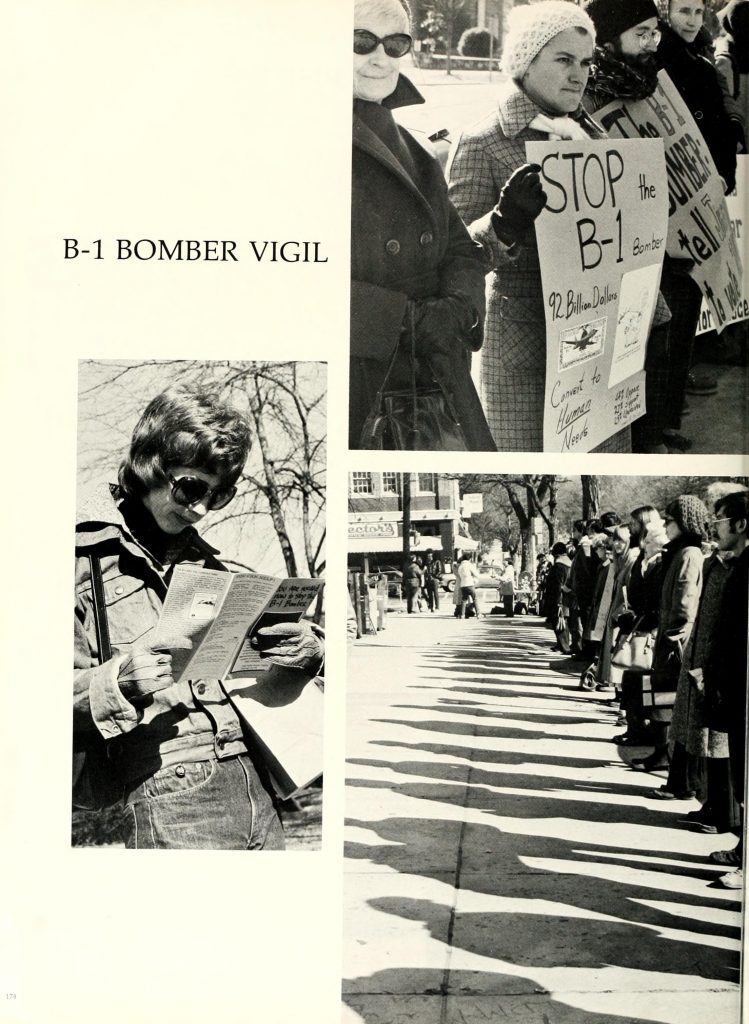
UNC-Chapel Hill, 1977, B-1 Bomber and Nuclear Armament
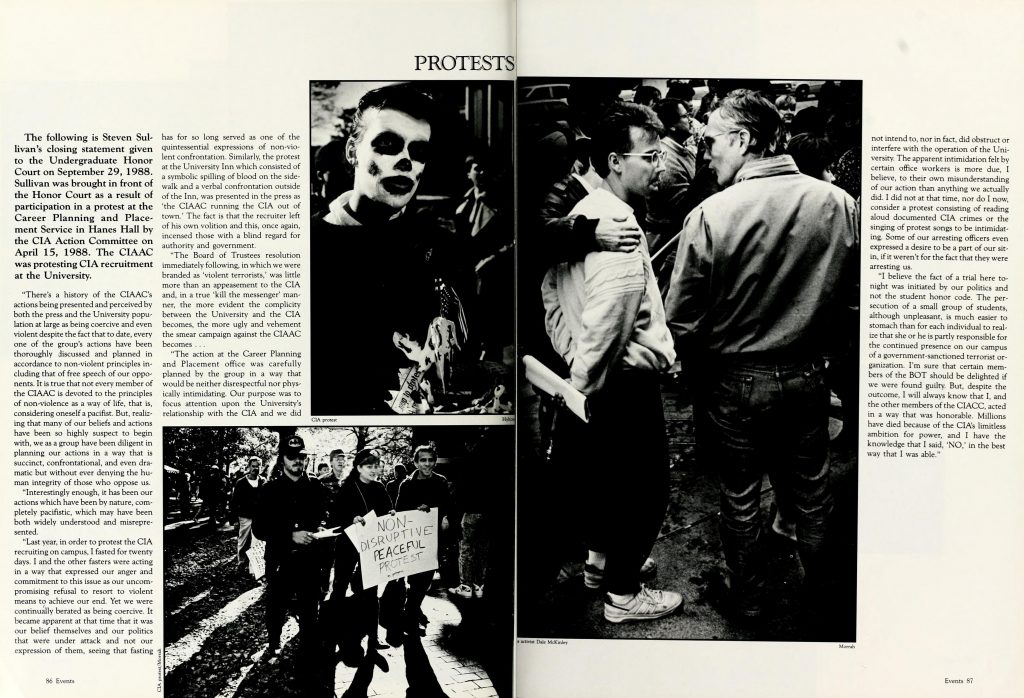
UNC-Chapel Hill, 1989, Central Intelligence Agency (CIA)
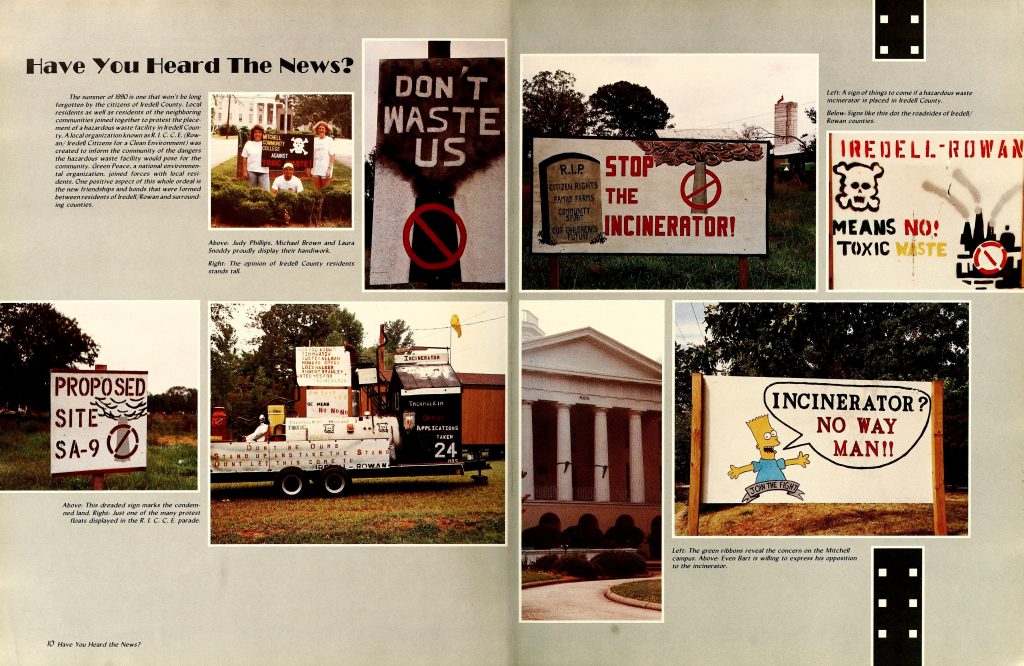
Mitchell Community College, 1990-1991, Hazardous Waste and Environmental Pollution
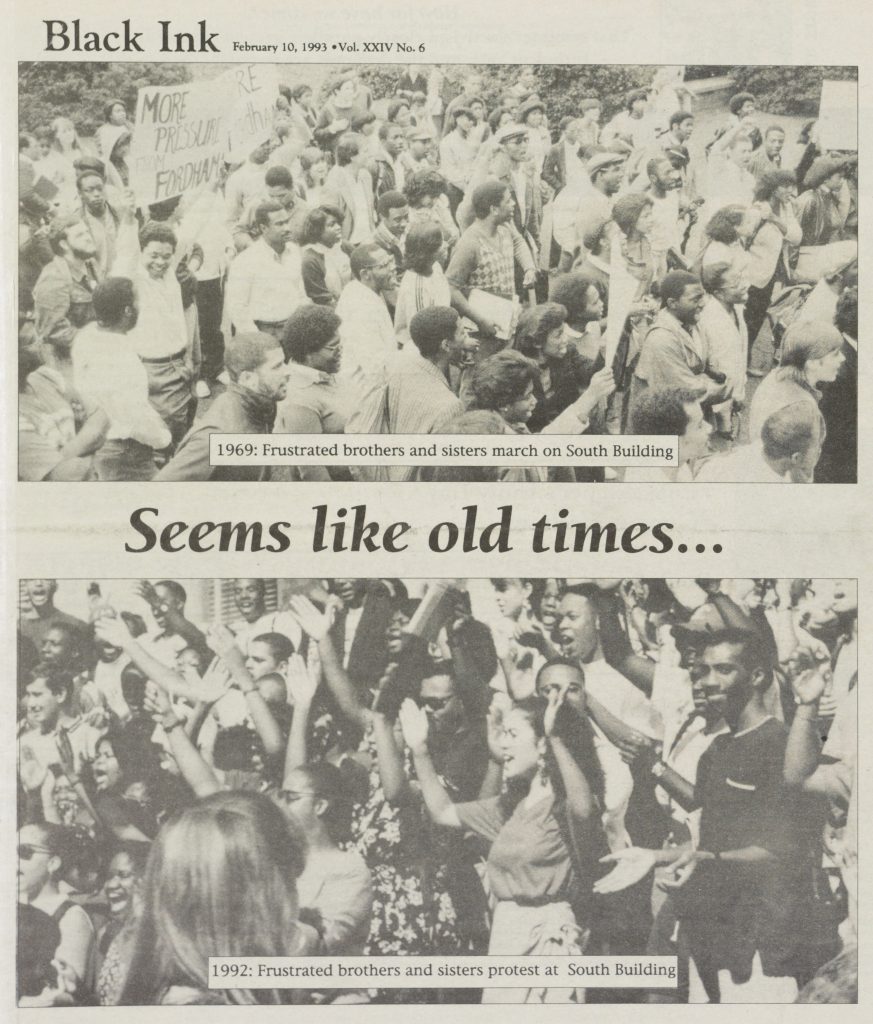
UNC-Chapel Hill, 1993, Racism
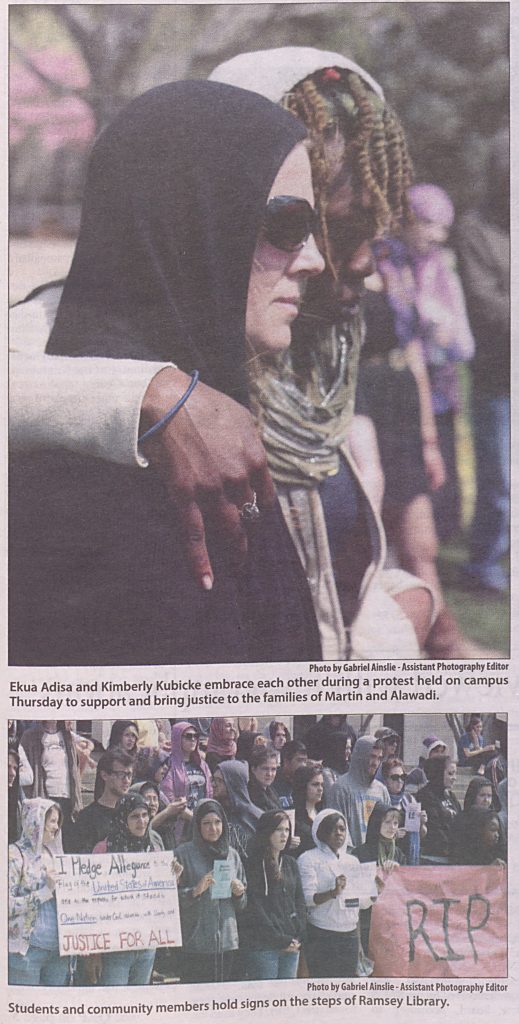
UNC-Asheville, 2012, Hate Crimes
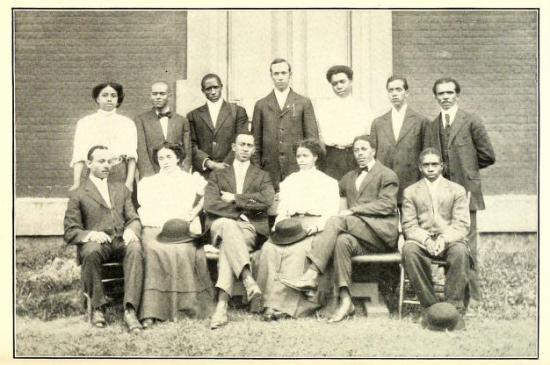
Students at Shaw University, 1911.
With the recent addition of student yearbooks from Livingstone College, DigitalNC now hosts historic materials from ten different Historically Black Colleges and Universities in North Carolina. These materials document more than a century of African American higher education in North Carolina. From our earliest projects in 2010 to the present, the North Carolina Digital Heritage Center has worked closely with libraries and archives at historically Black colleges around the state, and we continue to add materials from these collections on a regular basis. Follow the links below to browse yearbooks, newspapers, photos, scrapbooks, and more materials by school.
Bennett College (Greensboro)
Elizabeth City State University
Fayetteville State University
Johnson C. Smith University (Charlotte)
Livingstone College (Salisbury)
North Carolina A&T (Greensboro)
North Carolina Central University (Durham)
Saint Augustine’s University (Raleigh)
Shaw University (Raleigh)
Winston-Salem State University
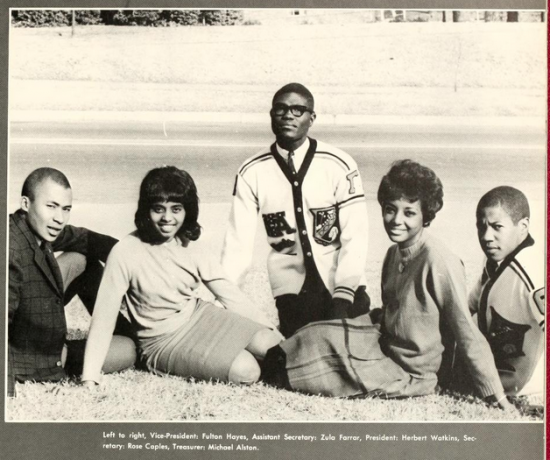
Sophomore class officers at North Carolina Central University, 1963.
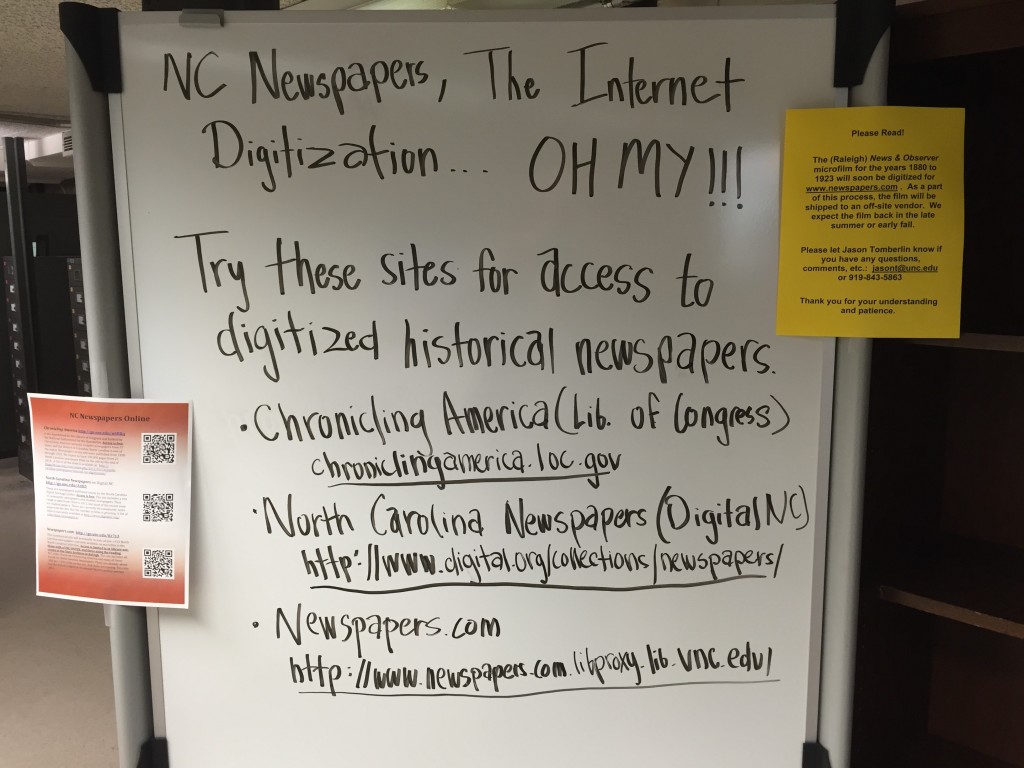
Sign pointing microfilm users to different online resources. Taken in Wilson Library’s North Carolina Collection Reading Room, UNC-Chapel Hill.
[This post updated July 2017.]
Newspaper digitization is challenging for a number of reasons (refer to our previous post). Although we’re biased, if you’re interested in accessing North Carolina newspapers online you’re actually pretty lucky; North Carolina is positioned well ahead of many other states. Below we’ve listed, in descending order of size, all of the major historic online newspaper databases sponsored by North Carolina institutions that are on our radar.
Name: Newspapers.com
Dates: 1751-2000
Coverage: Statewide
Amount Online: 3,500,000+ pages
Details: The North Carolina Collection at UNC-Chapel Hill Library recently partnered with Newspapers.com to digitize millions of pages of North Carolina newspapers. These are accessible for free at the State Archives of North Carolina or UNC-Chapel Hill’s Library, or you can view them anywhere at newspapers.com for a monthly fee. As of July 2017, NC LIVE also makes these papers available to member libraries and their card holders. While there are other vendors out there with historic North Carolina newspapers, this is the most comprehensive to date.
Name: The North Carolina Digital Heritage Center
Coverage: Statewide
Dates: 1824-2013
Amount Online: 640,000+ pages
Details: Each year we receive LSTA funding from the State Library of North Carolina to digitize newspapers. Part of that funding goes toward papers on microfilm, for which we ask for title nominations from libraries and archives. We also digitize some newspapers from print (mostly college and university student newspapers) as well as small runs of community papers that have not been microfilmed.
Name: The University of North Carolina at Chapel Hill, National Digital Newspaper Program Grant Award
Coverage: Statewide
Dates: 1836-1922
Amount Online: 100,000+ pages
Details: UNC-Chapel Hill is currently in its second round of providing selected historic newspapers for digitization and sharing through the Library of Congress’ Chronicling America website. These issues are searchable along with a selection of titles from other states.
Name: University of North Carolina at Greensboro Library / Greensboro Museum
Dates: 1826-1946
Coverage: Town of Greensboro and surrounding area
Amount Online: 5,000+ issues
Details: The Greensboro Historical Newspapers collection includes a variety of papers from that area, including World War II military base papers.
Name: The State Archives of North Carolina
Dates: 1752-1890s
Coverage: Statewide
Amount Online: 4,000+ issues
Details: The State Archives of North Carolina actively preserves, microfilms, and digitizes newspapers. While most of these are not currently available online, they have shared some of the earliest on their website.
Name: East Carolina University Library
Dates: 1887-1915
Coverage: Town of Greenville and surrounding area
Amount Online: 1,800+ issues
Details: ECU’s Digital Collections include The Eastern Reflector, a community paper published in Greenville.
While more focused, college and university papers (especially earlier issues) often included local community news. In addition to those featured on DigitalNC, here’s a list of other school papers online:
This isn’t to say others aren’t scanning their local newspapers – we know some heard of local entities (businesses and libraries) working toward that goal. But this post was intended to list the largest, statewide, and (mostly) freely searchable endeavors. Know of others? Tell us.
In Part 3 of this Newspaper Digitization series, we’ll get technical and describe how we digitize newspapers here at the Digital Heritage Center.
Two related notes:
- Looking for a newspaper that isn’t online (yet)? Through your local public library, you can most likely loan and view newspaper microfilm from the State Library of North Carolina. This Newspaper Locator may be helpful if you want to determine some of the titles published in a specific area.
- North Carolinians are heavily involved in efforts to preserve born-digital news. The Educopia Institute, located in Greensboro, is spearheading a conversation that brings in news producers and cultural heritage professionals to talk about our disappearing journalistic heritage. At their website you can learn more about the Memory Hole events and read a white paper on Newspaper Preservation.
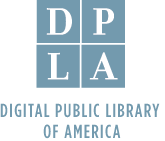 North Carolina institutions with digital collections can now have their content added to the Digital Public Library of America through the North Carolina Digital Heritage Center.
North Carolina institutions with digital collections can now have their content added to the Digital Public Library of America through the North Carolina Digital Heritage Center.
With over 5 million records and counting, the DPLA is a national digital library that brings together metadata from digital collections around the country into a single, searchable website. It also makes that metadata available to developers through an API (application programming interface), enabling reuse for all kinds of purposes – from visualization to data mining.<
North Carolina’s participation was announced last night at DPLA Fest in Boston. With over 120,000 items, these North Carolina institutions were partners in the initial launch:
Big news for alumni of public universities in North Carolina: student yearbooks from all 15 University of North Carolina system universities are now freely available online. Yearbooks for 14 of the schools have been digitized by the North Carolina Digital Heritage Center and are available in the North Carolina Yearbooks collection on DigitalNC, while yearbooks from North Carolina State University are available through the excellent Historical State digital collection.
These yearbooks are terrific resources for students and alumni, as well as anyone interested in the evolution of higher education and student life in 20th-century North Carolina. There are a total of 774 volumes available from these schools, ranging in date from 1890 (
The Hellenian, at UNC-Chapel Hill) to the present.
Pick your alma mater or hometown school from the links below and start browsing:
Greensboro College student yearbooks from 1908 through 2005 are now available online as part of the North Carolina College and University Yearbooks collection. The online collection also includes several early volumes from Davenport College in Lenoir, N.C. Founded in 1855 as a Methodist-affiliated women’s college, Davenport operated for over 75 years before merging with Greensboro College in 1938.

































